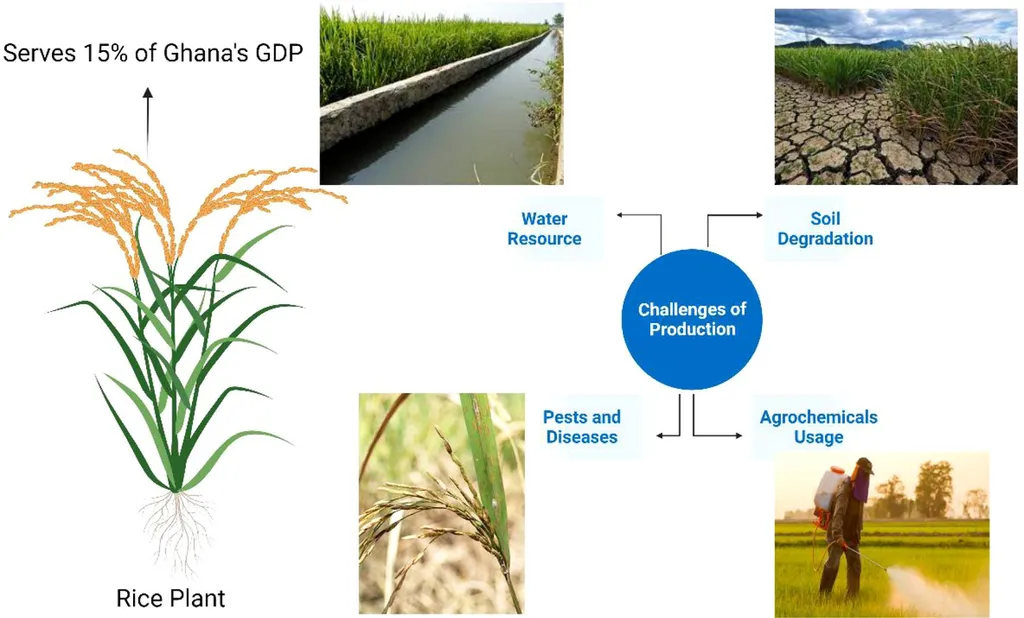In the lush rice fields of Ghana, a silent threat has been lurking, one that could significantly impact the country’s agricultural output and food security. A recent study published in the journal *Acta Biologica Slovenica* (Slovenian Biological Acta) has identified the culprit behind the high incidence of brown leaf spot disease in rice foliage: the fungal pathogen Bipolaris oryzae. This discovery, led by Titus Akansini Bukari from the Department of Crop and Soil Sciences Education at Akenten Appiah-Menka University of Skills Training and Entrepreneurial Development, could pave the way for sustainable management strategies to combat this disease.
Brown leaf spot disease has been a persistent issue in Ghana’s rice fields, with farmers observing high incidence rates but lacking effective management strategies. “The disease was rampant in the fields we visited, and farmers were at a loss on how to manage it,” Bukari explained. To tackle this problem, Bukari and his team set out to identify the pathogen responsible for the disease. Through a combination of morphological and molecular analyses, they confirmed that Bipolaris oryzae was the primary cause of the brown leaf spot disease.
The team’s approach involved isolating and identifying the fungal pathogen from infected rice plants. They then performed a pathogenicity test on the rice variety ‘AGRA’ to confirm Koch’s postulates, which are a series of steps to test whether an organism is the cause of a disease. The results of their molecular analysis, based on the sequencing of the ITS region, placed the isolates in the same clade as Bipolaris oryzae, confirming the pathogen’s identity.
The implications of this research are significant for Ghana’s agricultural sector. Rice is a staple food crop in the country, and the brown leaf spot disease can cause substantial yield losses if left unchecked. “Understanding the aetiology of the disease is the first step in developing effective management strategies,” Bukari noted. This knowledge can guide plant protectionists in creating sustainable solutions to curb the spread of the disease, ultimately safeguarding the country’s rice production and food security.
The study’s findings also have broader implications for the agricultural industry. As climate change and other environmental factors continue to impact crop health, understanding the pathogens that affect our food crops becomes increasingly important. The methods used in this research, such as molecular identification and pathogenicity testing, can be applied to other crops and regions, helping to identify and manage diseases more effectively.
Moreover, the discovery of Bipolaris oryzae as the cause of brown leaf spot disease in Ghana highlights the importance of international collaboration in agricultural research. The study’s publication in *Acta Biologica Slovenica* underscores the global interest in this research and the potential for collaborative efforts to address agricultural challenges.
As the world grapples with the pressing need to increase food production sustainably, research like this is crucial. It not only sheds light on the pathogens that threaten our crops but also provides a foundation for developing effective management strategies. With the identification of Bipolaris oryzae as the cause of brown leaf spot disease in Ghana, the stage is set for further research and the development of innovative solutions to protect rice crops and ensure food security.

